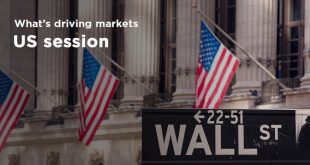
Markets Edge Higher as Investors Bet Big on Imminent Fed Rate Cuts
Global markets nudged higher on Thursday as expectations of a Federal Reserve rate cut next month continued to energize sentiment. With U.S. trading paused for the Thanksgiving holiday, activity across major asset classes remained quieter than usual, yet optimism persisted as investors positioned themselves for what many believe is the Fed’s first decisive step toward policy easing.
European stocks held a steady upward bias, supported by gains in technology and defense shares that outweighed weakness in healthcare names. The broader tone across markets suggested that concerns surrounding a potential AI-driven bubble—an issue that rattled equities earlier in the month—had eased for now, allowing risk appetite to resurface.
The dollar traded largely unchanged against its major counterparts, while the pound hovered at $1.324 after easing back from a recent four-week high. The euro remained steady around $1.1593 as currency markets entered a phase of subdued movement in the absence of U.S. market participation.
Rate Cut Bets Dominate Market Psychology
Although U.S. economic data flow has resumed following the end of the record 43-day government shutdown, much of the available information is outdated and offers limited insight into current conditions. This has pushed investors to rely heavily on public remarks from Federal Reserve officials, whose recent comments have significantly strengthened expectations of a December rate cut.
Market pricing now reflects an 85% probability of a rate reduction next month—an extraordinary jump from just 30% a week earlier. The shift underscores a growing belief that the Fed is preparing to move toward a more accommodative stance, further fueling stock market confidence. Many investors now see upward momentum as the most plausible path for equities so long as earnings continue to surprise positively and financial conditions ease.
Yen Back in Focus as Intervention Watch Intensifies
The Japanese yen drew renewed attention after strengthening to 156.37 per dollar, recovering from levels near 158 last week. Market participants remain alert to potential action from Japanese authorities, who have issued repeated warnings in recent weeks about the currency’s extended weakness.
Officials in Tokyo have signaled they are prepared to respond if volatility intensifies, and expectations are building that Japan’s central bank could raise interest rates as soon as next month to help stabilize the yen’s trajectory. Traders widely believe authorities would act only if the exchange rate climbs back toward the 158–160 range, a threshold that has previously triggered heightened concern.
Crypto and Commodities Show Measured Moves
Bitcoin advanced 0.7% to trade around $90,800, putting it on track to snap a four-week losing streak with an overall gain of nearly 3% for the week. The move reflects improved risk appetite tied to hopes of lower U.S. rates, which often support speculative assets.
Gold eased slightly by 0.1% to reach roughly $4,159 an ounce, retreating modestly as investors shifted toward equities but maintaining strong support near recent highs.
A Calm Session with an Optimistic Undercurrent
With U.S. markets closed and global trading volumes reduced, Thursday’s session was marked by quieter, more cautious movements. Yet beneath the surface, the overriding narrative was clear: anticipation of a Federal Reserve rate cut has reignited risk-on sentiment, encouraged modest gains across equities, and helped stabilize previously volatile assets.
As markets prepare to reopen after the holiday break, attention will quickly turn to whether the momentum generated by policy expectations can carry through into December—potentially setting the tone for the final stretch of the year.
 Noor Trends News, Technical Analysis, Educational Tools and Recommendations
Noor Trends News, Technical Analysis, Educational Tools and Recommendations




